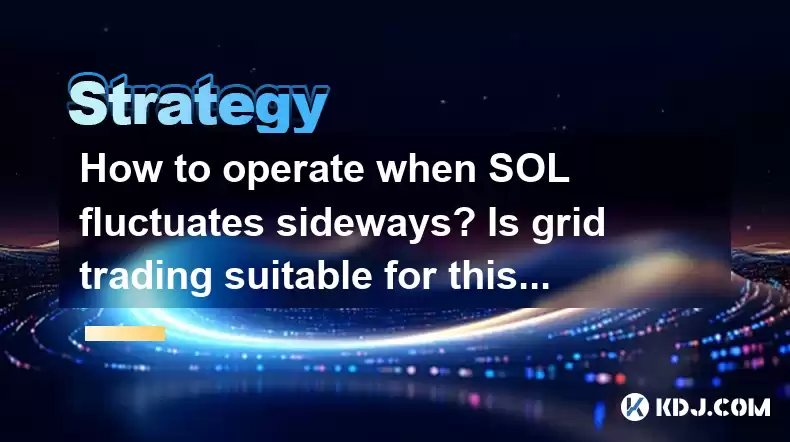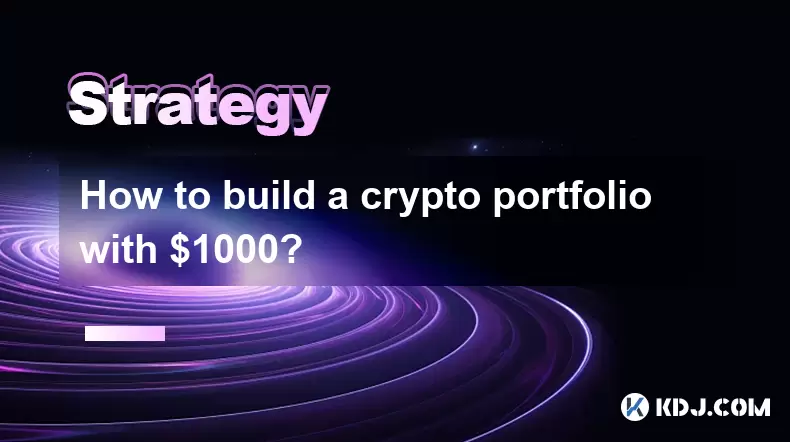-
 Bitcoin
Bitcoin $114400
1.32% -
 Ethereum
Ethereum $3499
2.20% -
 XRP
XRP $2.922
4.26% -
 Tether USDt
Tether USDt $0.0000
0.03% -
 BNB
BNB $752.6
1.53% -
 Solana
Solana $161.8
1.64% -
 USDC
USDC $0.9999
0.01% -
 TRON
TRON $0.3267
1.32% -
 Dogecoin
Dogecoin $0.1991
3.02% -
 Cardano
Cardano $0.7251
3.29% -
 Hyperliquid
Hyperliquid $38.32
3.36% -
 Stellar
Stellar $0.3972
7.58% -
 Sui
Sui $3.437
2.74% -
 Chainlink
Chainlink $16.29
3.65% -
 Bitcoin Cash
Bitcoin Cash $545.3
3.70% -
 Hedera
Hedera $0.2482
7.49% -
 Ethena USDe
Ethena USDe $1.001
0.03% -
 Avalanche
Avalanche $21.40
2.02% -
 Toncoin
Toncoin $3.579
1.56% -
 Litecoin
Litecoin $109.3
2.20% -
 UNUS SED LEO
UNUS SED LEO $8.951
-0.18% -
 Shiba Inu
Shiba Inu $0.00001220
2.75% -
 Polkadot
Polkadot $3.613
2.99% -
 Uniswap
Uniswap $9.173
3.78% -
 Monero
Monero $302.6
2.62% -
 Dai
Dai $0.0000
0.00% -
 Bitget Token
Bitget Token $4.320
1.52% -
 Pepe
Pepe $0.00001048
3.40% -
 Cronos
Cronos $0.1314
4.33% -
 Aave
Aave $259.4
3.54%
How to operate when SOL fluctuates sideways? Is grid trading suitable for this market?
In SOL's sideways market, grid trading can be effective by automating trades within a set range, but watch for breakouts and high fees.
Apr 29, 2025 at 08:49 am

How to Operate When SOL Fluctuations Sideways? Is Grid Trading Suitable for This Market?
When the cryptocurrency market, particularly Solana (SOL), experiences sideways fluctuations, traders often find themselves in a challenging position. Sideways markets are characterized by a lack of clear directional movement, with prices oscillating within a relatively narrow range. In such scenarios, understanding how to operate effectively becomes crucial. One strategy that traders often consider in these conditions is grid trading. This article will explore how to navigate SOL's sideways market and whether grid trading is a suitable approach.
Understanding Sideways Market Dynamics
Sideways markets occur when the price of an asset, such as SOL, moves within a defined range without a clear trend. This can be frustrating for traders who thrive on directional movements. However, it also presents unique opportunities for those who understand how to leverage these conditions.
In a sideways market, the key is to identify the upper and lower bounds of the trading range. For SOL, this might mean observing historical data to pinpoint where the price tends to peak and trough. Once these levels are established, traders can develop strategies that capitalize on the predictable oscillations.
Strategies for Trading SOL in a Sideways Market
When SOL is fluctuating sideways, several strategies can be employed to maximize returns. Here are some approaches:
Range Trading: This involves buying SOL at the lower end of the range and selling it at the higher end. Traders need to be vigilant about the support and resistance levels to execute this strategy effectively.
Mean Reversion: This strategy is based on the assumption that prices will revert to their mean over time. Traders can use technical indicators like the Relative Strength Index (RSI) to identify when SOL is overbought or oversold and trade accordingly.
Scalping: This involves making numerous small trades throughout the day to profit from minor price movements. Scalping can be particularly effective in a sideways market where volatility is low.
Each of these strategies requires a different approach and level of engagement, but they all aim to exploit the predictable nature of a sideways market.
Introduction to Grid Trading
Grid trading is an automated trading strategy that involves setting up a series of buy and sell orders at predetermined intervals within a specific price range. The idea is to profit from the small price movements that occur within the grid.
In the context of SOL, grid trading can be particularly appealing during sideways markets. By setting up a grid, traders can automate their trading activities and potentially profit from the oscillations without needing to monitor the market constantly.
Setting Up a Grid Trading Strategy for SOL
To implement a grid trading strategy for SOL, follow these steps:
Determine the Price Range: Analyze SOL's recent price movements to establish the upper and lower bounds of the trading range. For example, if SOL has been trading between $100 and $120, this would be your grid's range.
Set the Grid Intervals: Decide on the intervals at which you will place your buy and sell orders. If the range is $20, you might set intervals of $2, resulting in 10 buy orders and 10 sell orders.
Choose the Order Size: Determine how much SOL you will buy or sell at each interval. This could be a fixed amount or a percentage of your total investment.
Configure the Grid: Use a trading platform that supports grid trading, such as Binance or KuCoin, to set up your grid. Input the price range, intervals, and order sizes into the platform's grid trading tool.
Monitor and Adjust: While grid trading is automated, it's still important to monitor the market and adjust your grid if necessary. If SOL breaks out of the established range, you may need to reconfigure your grid.
Is Grid Trading Suitable for SOL's Sideways Market?
Grid trading can be highly suitable for SOL's sideways market due to its ability to capitalize on small price movements. The strategy's automated nature allows traders to take advantage of the market's oscillations without needing to be constantly active.
However, there are considerations to keep in mind. Grid trading works best in markets with low volatility and clear trading ranges. If SOL experiences sudden spikes or drops outside the established range, the grid may need to be adjusted or could result in losses.
Additionally, grid trading involves multiple transactions, which can lead to higher trading fees. Traders should factor these costs into their strategy to ensure profitability.
Risks and Considerations of Grid Trading SOL
While grid trading can be effective, it's not without risks. Here are some key considerations:
Market Breakouts: If SOL breaks out of the established range, the grid may no longer be effective, and traders could face losses.
Trading Fees: The frequent buying and selling involved in grid trading can accumulate significant fees, impacting overall profitability.
Over-Optimization: Setting the grid too tightly can result in over-optimization, where the strategy performs well in backtests but poorly in real-time trading.
Liquidity: Ensure that there is sufficient liquidity in the SOL market to execute the grid's orders without significant slippage.
Combining Grid Trading with Other Strategies
To enhance the effectiveness of grid trading in SOL's sideways market, traders can consider combining it with other strategies. For example:
Using Technical Indicators: Incorporate indicators like the Moving Average Convergence Divergence (MACD) or Bollinger Bands to help identify potential breakouts or confirm the range's validity.
Diversifying Across Assets: While focusing on SOL, consider setting up grids for other cryptocurrencies that are also experiencing sideways movements. This can help spread risk and potentially increase returns.
Adjusting the Grid Dynamically: Instead of setting a static grid, consider adjusting the intervals and order sizes based on real-time market conditions. This can help adapt to subtle changes within the sideways range.
Frequently Asked Questions
Q: Can grid trading be used for other cryptocurrencies besides SOL?
A: Yes, grid trading can be applied to any cryptocurrency that experiences sideways movements. The key is to identify a clear trading range and set up the grid accordingly. Popular platforms like Binance and KuCoin support grid trading for a variety of assets.
Q: How do I know if SOL is in a sideways market?
A: To determine if SOL is in a sideways market, analyze its price chart over a period of time. Look for a pattern where the price oscillates within a defined range without breaking out significantly in either direction. Technical indicators like the Average True Range (ATR) can also help confirm low volatility, a hallmark of sideways markets.
Q: What are the potential drawbacks of grid trading in a sideways market?
A: The main drawbacks include the risk of market breakouts, which can render the grid ineffective, and the accumulation of trading fees due to frequent transactions. Additionally, over-optimization and insufficient liquidity can pose challenges.
Q: Can I use grid trading on a mobile app?
A: Yes, many trading platforms that support grid trading, such as Binance and KuCoin, offer mobile apps where you can set up and manage your grids. Ensure that the app provides the necessary tools and features to configure and monitor your grid effectively.
Disclaimer:info@kdj.com
The information provided is not trading advice. kdj.com does not assume any responsibility for any investments made based on the information provided in this article. Cryptocurrencies are highly volatile and it is highly recommended that you invest with caution after thorough research!
If you believe that the content used on this website infringes your copyright, please contact us immediately (info@kdj.com) and we will delete it promptly.
- Kaspa, HBAR, and Cold Wallet: A New York Minute on Crypto's Latest Moves
- 2025-08-04 09:11:54
- Ethereum Whale Watch: Selling Pressure and Price Volatility
- 2025-08-04 09:11:54
- XRP ETF Mania: Teucrium's Crypto Triumph and the Altcoin Frenzy
- 2025-08-04 09:30:13
- Crypto Wallet Scam: A $900K Loss & What You Need to Know
- 2025-08-04 09:35:13
- Dogecoin's Wild Ride: Elliott Wave, Stochastic RSI, and What's Next, Ya Know?
- 2025-08-04 09:40:12
- Shiba Inu (SHIB), Crypto Investments, and the Meme Coin Evolution: What's the Deal?
- 2025-08-04 09:45:17
Related knowledge

How to avoid common crypto investment mistakes?
Jul 13,2025 at 01:35am
Understanding the Risks of Crypto InvestmentInvesting in cryptocurrency can be highly rewarding, but it also comes with significant risks. One of the ...

What is a long-short crypto strategy?
Jul 15,2025 at 10:56am
Understanding the Basics of a Long-Short Crypto StrategyA long-short crypto strategy is an investment approach where traders simultaneously take long ...

What is a long-short crypto strategy?
Jul 11,2025 at 01:28pm
Understanding the Basics of Long-Short Crypto StrategyA long-short crypto strategy is an investment approach where traders take both long and short po...

How to use the RSI indicator for crypto?
Jul 12,2025 at 03:56pm
Understanding the RSI Indicator in Cryptocurrency TradingThe Relative Strength Index (RSI) is a momentum oscillator used to measure the speed and chan...

Is copy trading a good strategy for crypto beginners?
Jul 12,2025 at 08:28am
Understanding Copy Trading in the Cryptocurrency MarketCopy trading is a strategy where novice traders replicate the trades of experienced investors a...

How to build a crypto portfolio with $1000?
Jul 13,2025 at 08:14pm
Understanding the Basics of Cryptocurrency InvestmentBuilding a crypto portfolio with $1000 starts with understanding the fundamentals of cryptocurren...

How to avoid common crypto investment mistakes?
Jul 13,2025 at 01:35am
Understanding the Risks of Crypto InvestmentInvesting in cryptocurrency can be highly rewarding, but it also comes with significant risks. One of the ...

What is a long-short crypto strategy?
Jul 15,2025 at 10:56am
Understanding the Basics of a Long-Short Crypto StrategyA long-short crypto strategy is an investment approach where traders simultaneously take long ...

What is a long-short crypto strategy?
Jul 11,2025 at 01:28pm
Understanding the Basics of Long-Short Crypto StrategyA long-short crypto strategy is an investment approach where traders take both long and short po...

How to use the RSI indicator for crypto?
Jul 12,2025 at 03:56pm
Understanding the RSI Indicator in Cryptocurrency TradingThe Relative Strength Index (RSI) is a momentum oscillator used to measure the speed and chan...

Is copy trading a good strategy for crypto beginners?
Jul 12,2025 at 08:28am
Understanding Copy Trading in the Cryptocurrency MarketCopy trading is a strategy where novice traders replicate the trades of experienced investors a...

How to build a crypto portfolio with $1000?
Jul 13,2025 at 08:14pm
Understanding the Basics of Cryptocurrency InvestmentBuilding a crypto portfolio with $1000 starts with understanding the fundamentals of cryptocurren...
See all articles

























































































